
|
It brightened up to 3.7 mag and became a naked eye comet in mid January (Jan. 13, Marek Biely). It is bright as 4.7 mag still now (Jan. 31, Maik Meyer). It will be getting fainter gradually after this. In the Northern Hemisphere, it keeps observable in good condition after this until the comet fades out. In the Southern Hemisphere, it will be unobservable soon.
Date(TT) R.A. (2000) Decl. Delta r Elong. m1 Best Time(A, h)
Jan. 31 2 21.20 38 17.5 0.752 1.290 94 5.1 18:53 (110, 75)
Feb. 7 2 2.61 43 56.0 0.887 1.296 87 5.5 18:59 (121, 64)
|
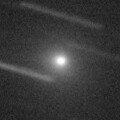
|
It brightened very rapidly in outburst up to 8.8 mag in mid December (Dec. 19, Marco Goiato). Then it faded down to 10.7 mag (Jan. 14, Chris Wyatt). However, it brightened in outburst again on Jan. 16, and brightened up to 7.0 mag (Jan. 17, Maik Meyer). Now it is 10.3 mag and diffuse (Jan. 25, Chris Wyatt). In the Northern Hemisphere, it will be geting higher gradually. In the Southern Hemisphere, it keeps locating extremely low after this.
Date(TT) R.A. (2000) Decl. Delta r Elong. m1 Best Time(A, h)
Jan. 31 23 58.52 2 44.9 1.429 1.100 50 10.2 18:53 ( 70, 31)
Feb. 7 0 28.22 6 35.8 1.466 1.149 51 10.5 18:59 ( 74, 33)
|

|
Now it is bright as 12.7 mag (Jan. 24, Chris Wyatt). It will brighten up to 8-9 mag in 2015 spring. In the Southern Hemisphere, it will be getting higher gradually after this. In the Northern Hemisphere, it keeps extremely low and hard to observe until June. It will be observable in good condition after June while the comet will be fading gradually.
Date(TT) R.A. (2000) Decl. Delta r Elong. m1 Best Time(A, h)
Jan. 31 18 1.60 -23 56.2 2.146 1.532 40 10.8 5:33 (309, 10)
Feb. 7 18 26.67 -24 2.1 2.087 1.500 41 10.5 5:28 (308, 9)
|
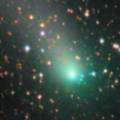
|
The brightness evolution has slowed down before the perihelion passage, and it faded down to 11.6 mag in late October (Oct. 26, Todd Augustyniak). However, an outburst occured around Nov. 10-12, and it brightened by 2 mag. It is bright as 11.5 mag still now (Jan. 17, Ken-ichi Kadota). In the Northern Hemisphere, it is getting higher rapidly in the morning sky, and it will be observable in excellent condition after this while the comet will be fading. In the Southern Hemisphere, it is not observable until mid February.
Date(TT) R.A. (2000) Decl. Delta r Elong. m1 Best Time(A, h)
Jan. 31 18 5.51 11 46.8 2.433 1.960 50 11.4 5:33 (279, 32)
Feb. 7 18 5.61 14 49.9 2.389 2.026 56 11.5 5:28 (279, 39)
|

|
It brightened up to 6.9 mag in autumn (Oct. 17, Marco Goiato). Now it is fading. But it is bright as 11.6 mag still now (Jan. 17, Chris Wyatt). In the Northern Hemisphere, it keeps observable in the evening low sky until early February. It is getting lower also in the Southern Hemisphere, and will be unobservable temporarily in March. But it will be observable in good condition again after April.
Date(TT) R.A. (2000) Decl. Delta r Elong. m1 Best Time(A, h)
Jan. 31 0 10.00 -25 55.1 3.130 2.553 46 11.7 18:53 ( 46, 12)
Feb. 7 0 12.32 -24 35.7 3.295 2.634 41 11.9 18:59 ( 52, 9)
|
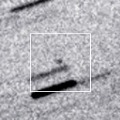
|
Now it is 16.0 mag (Dec. 22, Ken-ichi Kadota). It will brighten very rapidly, and will brighten up to 11 mag from January to February. In the Southern Hemisphere, it will be observable in the morning sky after February while the comet will be fading. It is hardly observable in the Northern Hemisphere.
Date(TT) R.A. (2000) Decl. Delta r Elong. m1 Best Time(A, h)
Jan. 31 19 9.07 -20 52.2 2.066 1.239 24 11.7 5:33 (296, 0)
Feb. 7 19 37.10 -21 24.3 2.062 1.243 25 11.8 5:28 (296, -1)
|

|
Now it is 11.4 mag (Jan. 17, Ken Harikae). It will be fading graudually after this. But it keeps observable for a long time until the comet fades out.
Date(TT) R.A. (2000) Decl. Delta r Elong. m1 Best Time(A, h)
Jan. 31 16 24.83 -13 7.2 1.886 1.707 64 12.7 5:33 (321, 32)
Feb. 7 16 39.11 -13 35.1 1.887 1.768 67 12.9 5:28 (323, 33)
|
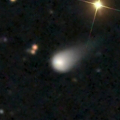
|
It brightened up to 13.6 mag until the end of 2014, brighter than originally expected (Dec. 19, Chris Wyatt). It is expected to brighten up to 4 mag from autumn to winter in 2015. Now it is not observable. In the Southern Hemisphere, it will be observable in good condition again after late March. In the Northern Hemisphere, it is hardly observable until 2015 December.
Date(TT) R.A. (2000) Decl. Delta r Elong. m1 Best Time(A, h)
Jan. 31 22 35.57 -23 30.2 5.013 4.141 24 13.2 18:53 ( 62, -2)
Feb. 7 22 39.15 -23 12.2 4.978 4.065 20 13.1 18:59 ( 67, -7)
|
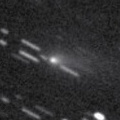
|
It brightened up to 2 mag by unusual major outburst in 2007. It brightened up to 12.6 mag in this apparition (June 25, Taras Prystavski). It faded down to 17-18 mag, but it suddenly brightened in outburst on Jan. 26. Now it is so bright as 13.2 mag (Jan. 29, Uwe Pilz). In the Northern Hemisphere, it keeps observable in good condition. In the Southern Hemisphere, it keeps extremely low.
Date(TT) R.A. (2000) Decl. Delta r Elong. m1 Best Time(A, h)
Jan. 31 4 6.56 42 8.8 2.454 3.011 115 13.2 19:26 (180, 83)
Feb. 7 4 10.42 41 16.6 2.567 3.041 109 13.7 19:02 (180, 84)
|

|
Now it is 13.8 mag (Dec. 29, Chris Wyatt). It is fainter than originally predicted by 2 mag. In the Northern Hemisphere, it keeps observable at 14 mag in excellent condition from 2014 summer to 2015 spring. It locates somewhat low in the Southern Hemisphere.
Date(TT) R.A. (2000) Decl. Delta r Elong. m1 Best Time(A, h)
Jan. 31 11 53.56 18 6.4 1.387 2.211 136 13.8 3:15 ( 0, 73)
Feb. 7 11 52.23 18 38.7 1.366 2.238 143 13.9 2:46 ( 0, 74)
|

|
It is so faint as 18 mag recently. It is getting higher gradually in the morning sky.
Date(TT) R.A. (2000) Decl. Delta r Elong. m1 Best Time(A, h)
Jan. 31 17 27.48 -30 21.0 6.688 6.073 48 14.0 5:33 (319, 10)
Feb. 7 17 32.51 -30 27.8 6.599 6.071 53 14.0 5:28 (322, 12)
|
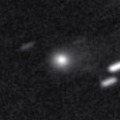
|
It is getting higher gradually in the morning sky. In 2015, it keeps 13 mag and will be observable in good condition for a long time.
Date(TT) R.A. (2000) Decl. Delta r Elong. m1 Best Time(A, h)
Jan. 31 17 44.14 -13 45.5 4.132 3.510 45 14.0 5:33 (304, 20)
Feb. 7 17 54.23 -13 39.0 4.054 3.499 49 14.0 5:28 (307, 22)
|
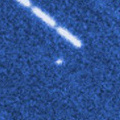
|
Now it is 15.8 mag (Jan. 25, B. Lutkenhoner, P. Cox). It will brighten up to 9 mag in 2015 spring. But the condition of this apparition is bad. It will be getting lower gradually, and will be unobservable in late January in the Northern Hemisphere, or in mid March in the Southern Hemisphere. In the Northern Hemisphere, it will be observable after 2015 autumn while the comet will be fading.
Date(TT) R.A. (2000) Decl. Delta r Elong. m1 Best Time(A, h)
Jan. 31 23 17.62 -27 38.1 2.599 1.878 34 14.4 18:53 ( 53, 3)
Feb. 7 23 33.42 -25 17.5 2.582 1.829 32 14.1 18:59 ( 57, 2)
|
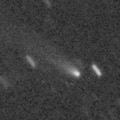
|
Now it is 14.6 mag (Jan. 21, Catalina Sky Survey). It will be observable at 14 mag in excellent condition in winter.
Date(TT) R.A. (2000) Decl. Delta r Elong. m1 Best Time(A, h)
Jan. 31 1 35.81 15 22.9 1.169 1.353 77 14.8 18:53 ( 61, 57)
Feb. 7 1 59.12 18 0.8 1.206 1.366 76 14.9 18:59 ( 68, 57)
|
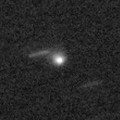
|
It will approach to the sun down to 0.3 a.u. in 2015 July, and it is expected to be bright. Now it is 15.6 mag (Jan. 13, Yasukazu Ikari). Hard to observe for a while after this. In the Southern Hemisphere, it will be observable after mid July in 2015, and keeps observable while the comet will be fading gradually. It will not be observable after this in the Northern Hemisphere.
Date(TT) R.A. (2000) Decl. Delta r Elong. m1 Best Time(A, h)
Jan. 31 23 12.25 -17 35.5 3.685 2.913 33 15.0 18:53 ( 61, 9)
Feb. 7 23 18.23 -16 19.3 3.647 2.818 28 14.8 18:59 ( 67, 5)
|

|
It brightened up to 11-12 mag in 2012. It has already faded down to 15.7 mag (Jan. 12, Ken-ichi Kadota). It keeps observable at 15 mag in good condition until 2015 summer.
Date(TT) R.A. (2000) Decl. Delta r Elong. m1 Best Time(A, h)
Jan. 31 11 55.20 -10 14.7 8.287 8.913 126 15.1 3:17 ( 0, 45)
Feb. 7 11 51.69 -10 2.8 8.230 8.950 134 15.1 2:46 ( 0, 45)
|
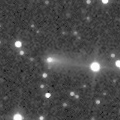
|
Now it is 14.2 mag (Jan. 13, Yasukazu Ikari. It keeps 15 mag until February, and it will be observable in excellent condition in the Northern Hemisphere. It locates somewhat low in the Southern Hemisphere.
Date(TT) R.A. (2000) Decl. Delta r Elong. m1 Best Time(A, h)
Jan. 31 6 21.26 23 11.2 1.623 2.490 144 15.1 21:40 ( 0, 78)
Feb. 7 6 19.50 22 36.3 1.683 2.495 136 15.2 21:11 ( 0, 78)
|
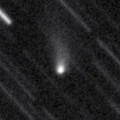
|
Now it is 15.8 mag (Jan. 14, K. Hills). The brightness evolution is somewhat slow. It keeps 15-16 mag for a long time from 2014 autumn to 2015 autumn. In the Southern Hemisphere, it keeps observable in excellent condition for a long time. In the Northern Hemisphere, it is unobservable until 2015 June.
Date(TT) R.A. (2000) Decl. Delta r Elong. m1 Best Time(A, h)
Jan. 31 1 9.14 -57 53.7 2.305 2.031 61 15.1 18:53 ( 19, -8)
Feb. 7 1 1.05 -53 46.0 2.374 2.018 57 15.2 18:59 ( 26, -7)
|

|
Now it is 14.5 mag (Dec. 24, Taras Prystavski). It keeps 15 mag for a long time from 2014 to 2015. It is observable in excellent condition in 2014 in the Southern Hemisphere, or in 2015 in the Northern Hemisphere.
Date(TT) R.A. (2000) Decl. Delta r Elong. m1 Best Time(A, h)
Jan. 31 0 23.14 -9 12.4 4.430 3.899 51 15.1 18:53 ( 55, 27)
Feb. 7 0 27.12 -7 30.8 4.509 3.894 46 15.2 18:59 ( 62, 23)
|
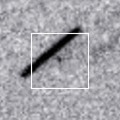
|
It will brighten up to 11 mag in spring. But the condition is bad in this apparition. In the Southern Hemisphere, it will become observable in the morning extremely low sky after late April. It will not be observable until late July in the Northern Hemisphere.
Date(TT) R.A. (2000) Decl. Delta r Elong. m1 Best Time(A, h)
Jan. 31 20 9.96 -15 5.9 2.363 1.406 10 15.7 5:33 (283, -8)
Feb. 7 20 34.68 -14 40.7 2.343 1.388 11 15.1 5:28 (282, -8)
|
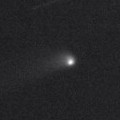
|
Now it is 15.2 mag (Dec. 28, Taras Prystavski). It will brighten up to 14 mag from 2015 to 2016. It is observable in good condition in the Southern Hemisphere. It locates somewhat low in the Northern Hemisphere.
Date(TT) R.A. (2000) Decl. Delta r Elong. m1 Best Time(A, h)
Jan. 31 2 57.08 -15 43.1 4.513 4.559 86 15.4 18:53 ( 12, 39)
Feb. 7 2 53.58 -14 18.9 4.605 4.537 79 15.4 18:59 ( 23, 38)
|

|
It brightened rapidly in outburst in mid October in 2013. Now it is fading. It has already faded down to 13.6 mag (Dec. 12, Taras Prystavski). In the Southern Hemisphere, it will be low temprarily from February to March. But it keeps observable in good condition for a long time after this until the comet fades out. It is not observable in the Northern Hemisphere.
Date(TT) R.A. (2000) Decl. Delta r Elong. m1 Best Time(A, h)
Jan. 31 23 20.97 -37 31.6 5.061 4.330 38 15.5 18:53 ( 45, -3)
Feb. 7 23 29.22 -36 47.3 5.159 4.394 35 15.6 18:59 ( 49, -6)
|
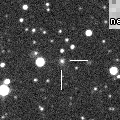
|
Now it is 15.9 mag (Jan. 10, Toshiyuki Takahashi). In the Northern Hemisphere, it keeps 15-16 mag and observable in excellent condition for a long time until early summer in 2015. It locates somewhat low in the Southern Hemisphere.
Date(TT) R.A. (2000) Decl. Delta r Elong. m1 Best Time(A, h)
Jan. 31 13 35.48 33 28.4 3.115 3.647 115 15.6 4:57 ( 0, 88)
Feb. 7 13 36.11 33 47.2 3.070 3.665 120 15.6 4:30 ( 0, 89)
|

|
Brightening very rapidly. Now it is so bright as 14.3 mag (Jan. 26, T. Seki, S. Shimomoto). It keeps observable at 15 mag in good condition from winter to spring.
Date(TT) R.A. (2000) Decl. Delta r Elong. m1 Best Time(A, h)
Jan. 31 9 7.03 10 37.7 2.597 3.575 172 15.7 0:29 ( 0, 66)
Feb. 7 9 2.83 10 32.2 2.579 3.561 173 15.6 23:53 ( 0, 65)
|
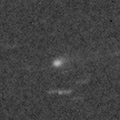
|
Now it is 16.3 mag (Dec. 20, Taras Prystavski). It will brighten up to 16 mag and will be observable in excellent condition in winter.
Date(TT) R.A. (2000) Decl. Delta r Elong. m1 Best Time(A, h)
Jan. 31 12 20.62 5 10.8 1.423 2.169 127 15.9 3:42 ( 0, 60)
Feb. 7 12 21.79 5 41.9 1.384 2.191 134 15.9 3:16 ( 0, 61)
|

|
It brightened up to 6.5 mag in September (Sept. 21, Marco Goiato). Now it is fading. It has already faded down to 14.9 mag (Jan. 2, Taras Prystavski). It keeps observable in good condition after this, while the comet will be fading gradually.
Date(TT) R.A. (2000) Decl. Delta r Elong. m1 Best Time(A, h)
Jan. 31 15 56.02 3 33.7 2.312 2.282 75 16.0 5:33 (317, 50)
Feb. 7 15 51.31 5 39.8 2.267 2.378 84 16.1 5:28 (324, 56)
|
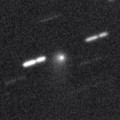
|
Now it is 15.8 mag (Jan. 11, Y. Sugiyama). It keeps observable at 15-16 mag for a long time from 2015 to 2016. In the Northern Hemisphere, it is observable in excellent condition. It locates somewhat low in the Southern Hemisphere.
Date(TT) R.A. (2000) Decl. Delta r Elong. m1 Best Time(A, h)
Jan. 31 2 55.46 29 1.6 5.272 5.515 99 16.0 18:53 ( 57, 80)
Feb. 7 2 55.24 29 28.3 5.369 5.497 92 16.1 18:59 ( 75, 74)
|
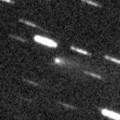
|
Now it is 15.4 mag (Jan. 18, Yuji Ohshima). It keeps observable for a long time after this while the comet will be fading gradually.
Date(TT) R.A. (2000) Decl. Delta r Elong. m1 Best Time(A, h)
Jan. 31 9 39.91 1 30.9 1.823 2.770 160 16.0 1:02 ( 0, 56)
Feb. 7 9 33.81 2 11.9 1.844 2.812 166 16.1 0:29 ( 0, 57)
|
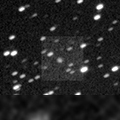
|
Now it is 16.3 mag (Jan. 25, R. Benavides). It will pass close to the earth from spring to summer in 2016, and it is expected to be observable at 6-7 mag in good condition. In the Northern Hemispehre, it keeps observable in good condition until 2015 spring when the comet will brighten up to 15.5 mag. In the Southern Hemisphere, it keeps low for a long time until 2016 spring.
Date(TT) R.A. (2000) Decl. Delta r Elong. m1 Best Time(A, h)
Jan. 31 5 13.82 36 10.2 4.743 5.413 128 16.2 20:32 (180, 89)
Feb. 7 5 6.98 35 52.6 4.781 5.349 120 16.2 19:58 (180, 89)
|
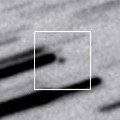
|
Now it is 16.6 mag (Jan. 29, Catalina Sky Survey). It will pass the perihelion on Mar. 15. In the Northern Hemispehre, it keeps observable in good condition until late February. In the Southern Hemisphere, it keeps observable until mid February, but it locates low.
Date(TT) R.A. (2000) Decl. Delta r Elong. m1 Best Time(A, h)
Jan. 31 1 11.58 10 26.6 0.885 1.075 69 16.3 18:53 ( 62, 49)
Feb. 7 1 8.09 8 15.3 0.892 0.959 61 16.2 18:59 ( 68, 41)
|
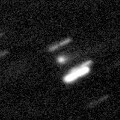
|
Now it is 15.4 mag (Jan 17, Mt. Lemmon Survey). It will brighten up to 16 mag in winter, and will be observable in excellent condition.
Date(TT) R.A. (2000) Decl. Delta r Elong. m1 Best Time(A, h)
Jan. 31 8 4.95 13 9.1 3.135 4.103 167 16.3 23:23 ( 0, 68)
Feb. 7 8 1.45 13 18.1 3.163 4.107 160 16.3 22:52 ( 0, 68)
|

|
Now it is 15.6 mag (Jan. 19, Catalina Sky Survey). It will brighten up to 11 mag in 2015 autumn. In this apparition, it is observable until the highlight while the comet is brightening.
Date(TT) R.A. (2000) Decl. Delta r Elong. m1 Best Time(A, h)
Jan. 31 13 9.82 -2 4.2 2.286 2.828 113 16.6 4:31 ( 0, 53)
Feb. 7 13 12.34 -2 0.9 2.159 2.787 120 16.3 4:06 ( 0, 53)
|
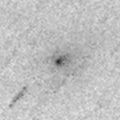
|
It brightened up to 15.4 mag in autumn (Nov. 19, Taras Prystavski). But it was extremely diffuse. It was reported so faint as 20 mag after December. It keeps observable in excellent condition in the Southern Hemisphere. But it locates low in the Northern Hemisphere.
Date(TT) R.A. (2000) Decl. Delta r Elong. m1 Best Time(A, h)
Jan. 31 9 0.51 -37 5.5 1.498 2.218 125 16.3 0:23 ( 0, 18)
Feb. 7 8 51.17 -38 17.7 1.545 2.267 125 16.5 23:41 ( 0, 17)
|

|
Now it is 17.5 mag (Jan. 11, F. Garcia). It will brighten up to 13 mag in 2016. In the Northern Hemisphere, it will be observable in excellent condition in this winter. It locates somewhat low in the Southern Hemisphere. It is fainter than this ephemeris recently.
Date(TT) R.A. (2000) Decl. Delta r Elong. m1 Best Time(A, h)
Jan. 31 5 44.95 28 7.8 2.317 3.101 135 16.4 21:04 ( 0, 83)
Feb. 7 5 42.38 27 59.9 2.365 3.075 128 16.4 20:34 ( 0, 83)
|

|
Now it is 15.8 mag (Jan. 2, Ken-ichi Kadota). It will be higher gradually, and will be observable at 16-17 mag in good condition from winter to spring.
Date(TT) R.A. (2000) Decl. Delta r Elong. m1 Best Time(A, h)
Jan. 31 16 21.75 -10 58.1 2.166 1.973 65 16.6 5:33 (320, 35)
Feb. 7 16 35.84 -11 8.1 2.128 2.001 69 16.7 5:28 (322, 36)
|

|
Now it is 17.4 mag (Jan. 18, Catalina Sky Survey). It is expected to brighten rapidly and will be observable in good condition at 13 mag from March to May.
Date(TT) R.A. (2000) Decl. Delta r Elong. m1 Best Time(A, h)
Jan. 31 13 40.04 -10 58.7 0.967 1.532 103 17.1 5:01 ( 0, 44)
Feb. 7 14 1.20 -12 36.5 0.880 1.482 105 16.6 4:54 ( 0, 42)
|
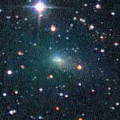
|
It brightened up to 13.3 mag in November (Nov. 19, Taras Prystavski). Now it is fading rapidly. It has already faded down to 16.2 mag (Jan. 25, J. L. Martin). It keeps observable in excellent condition in the Northern Hemisphere. It locates low in the Southern Hemisphere.
Date(TT) R.A. (2000) Decl. Delta r Elong. m1 Best Time(A, h)
Jan. 31 5 8.88 39 20.9 1.216 1.975 127 16.8 20:28 (180, 86)
Feb. 7 5 15.47 39 13.8 1.303 2.007 121 17.1 20:07 (180, 86)
|
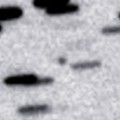
|
Now it is 16.0 mag (Jan. 3, Taras Prystavski). It keeps 17-18 mag for a long time from 2014 to 2016.
Date(TT) R.A. (2000) Decl. Delta r Elong. m1 Best Time(A, h)
Jan. 31 13 1.83 -23 30.5 4.975 5.339 106 17.0 4:23 ( 0, 31)
Feb. 7 12 55.49 -23 47.5 4.857 5.340 114 16.9 3:50 ( 0, 31)
|

|
Now it is 16.8 mag (Jan. 23, Catalina Sky Survey). It keeps 13 mag for a long time from 2015 to 2016, and will be observable in excellent condition in the Northern Hemisphere. In the Southern Hemisphere, it is observable only until mid 2015 March.
Date(TT) R.A. (2000) Decl. Delta r Elong. m1 Best Time(A, h)
Jan. 31 3 45.19 21 34.3 4.386 4.788 108 17.0 19:04 ( 0, 77)
Feb. 7 3 42.65 22 9.1 4.452 4.737 100 17.0 18:59 ( 25, 76)
|

|
First return of a peculiar asteroid 1998 HO121. It keeps observable at 17-18 mag from 2015 to 2016.
Date(TT) R.A. (2000) Decl. Delta r Elong. m1 Best Time(A, h)
Jan. 31 6 57.44 7 19.8 2.309 3.202 150 17.2 22:16 ( 0, 62)
Feb. 7 6 54.81 7 49.9 2.337 3.184 143 17.3 21:46 ( 0, 63)
|
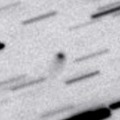
|
It keeps observable at 17-18 mag for a long time from 2013 to 2016. It keeps locating high in the Northern Hemisphere. It keeps locating very low in the Southern Hemipshere. No observations have been reported since 2014 November.
Date(TT) R.A. (2000) Decl. Delta r Elong. m1 Best Time(A, h)
Jan. 31 17 24.98 48 31.3 6.648 6.558 80 17.3 5:33 (234, 52)
Feb. 7 17 26.24 49 39.3 6.613 6.566 83 17.3 5:28 (231, 56)
|
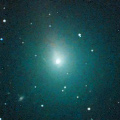
|
It brightened rapidly, and reached up to 10.3 mag in autumn (Oct. 22, Bob King). Now it is fading rapidly. It has already faded down to 15.8 mag (Jan. 3, Ken-ichi Kadota). In the Northern Hemisphere, it keeps observable in good condition until the comet fades out in spring. It is not observable in the Southern Hemisphere.
Date(TT) R.A. (2000) Decl. Delta r Elong. m1 Best Time(A, h)
Jan. 31 19 34.29 42 13.0 2.137 1.895 62 17.3 5:33 (237, 29)
Feb. 7 19 37.23 42 1.4 2.190 1.939 62 18.1 5:28 (238, 32)
|

|
Now it is 18.0 mag (Jan. 23, K. Hills). It keeps observable at 17 mag from winter to spring. It is observable in excellent condition in the Southern Hemisphere. But it locates somewhat low in the Northern Hemisphere.
Date(TT) R.A. (2000) Decl. Delta r Elong. m1 Best Time(A, h)
Jan. 31 11 45.14 -18 16.0 2.469 3.133 124 17.4 3:07 ( 0, 37)
Feb. 7 11 39.61 -20 18.5 2.393 3.125 130 17.3 2:34 ( 0, 35)
|

|
Now it is 17.8 mag (Jan. 6, B. Lutkenhoner). It was observed around 17-18 mag in early 2014. It will be observable around 17-18 mag again from 2014 autumn to 2015 spring, in excellent condition in the Northern Hemisphere. It is not observable in the Southern Hemisphere.
Date(TT) R.A. (2000) Decl. Delta r Elong. m1 Best Time(A, h)
Jan. 31 10 40.56 57 17.1 4.421 5.169 135 17.4 2:03 (180, 68)
Feb. 7 10 34.59 57 19.0 4.423 5.177 135 17.4 1:29 (180, 68)
|
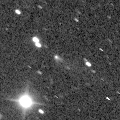
|
Now it is 17.2 mag (Jan. 10, Toshiyuki Takahashi). It was observed at 17 mag from 2013 to early 2014. It will be observable at 17.5 mag in good condition again from autumn to winter in 2014.
Date(TT) R.A. (2000) Decl. Delta r Elong. m1 Best Time(A, h)
Jan. 31 8 12.82 13 25.7 2.432 3.406 169 17.4 23:31 ( 0, 68)
Feb. 7 8 8.22 13 40.1 2.468 3.421 162 17.5 22:59 ( 0, 69)
|

|
Now it is 16.3 mag (Jan. 27, F. Limon). It will be fading after this, and will be fainter than 18 mag in late February.
Date(TT) R.A. (2000) Decl. Delta r Elong. m1 Best Time(A, h)
Jan. 31 4 52.21 54 19.9 1.113 1.832 121 17.5 20:12 (180, 71)
Feb. 7 5 0.82 54 49.8 1.173 1.844 117 17.7 19:53 (180, 70)
|
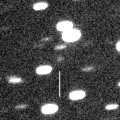
|
Now it is 17.6 mag (Jan. 21, Catalina Sky Survey). Now it is around the aphelion. In the Northern Hemisphere, it is observable at 18 mag in good condition from winter to spring. It locates somewhat low in the Southern Hemisphere.
Date(TT) R.A. (2000) Decl. Delta r Elong. m1 Best Time(A, h)
Jan. 31 8 57.05 28 20.9 3.642 4.613 169 17.6 0:20 ( 0, 83)
Feb. 7 8 52.12 28 41.6 3.643 4.604 165 17.6 23:42 ( 0, 84)
|

|
Now it is 17.6 mag (Jan. 22, A. Maury, J.-F. Soulier, J.-G. Bosch, T. Noel). It keeps observable at 17 mag from spring to summer. It locates somewhat low in the Northern Hemisphere.
Date(TT) R.A. (2000) Decl. Delta r Elong. m1 Best Time(A, h)
Jan. 31 16 17.60 -27 41.8 3.458 3.142 63 17.7 5:33 (330, 21)
Feb. 7 16 26.91 -28 1.4 3.368 3.141 68 17.6 5:28 (333, 22)
|

|
Now it is 17.0 mag (Dec. 30, Space Surveillance Telescope, Atom Site). It keeps 18 mag from 2014 to 2015. In 2015, it keeps observable in good condition from winter to spring.
Date(TT) R.A. (2000) Decl. Delta r Elong. m1 Best Time(A, h)
Jan. 31 10 54.63 -9 54.8 5.168 5.947 139 17.8 2:16 ( 0, 45)
Feb. 7 10 52.07 -10 14.9 5.117 5.957 145 17.8 1:46 ( 0, 45)
|

|
Now it is 18.8 mag (Dec. 20, K. Hills). It keeps 18 mag for a very long time from 2013 to 2018. It locates high in the Southern Hemisphere. But it locates somewhat low in the Northern Hemisphere.
Date(TT) R.A. (2000) Decl. Delta r Elong. m1 Best Time(A, h)
Jan. 31 12 22.85 -23 39.8 8.720 9.166 114 17.8 3:44 ( 0, 31)
Feb. 7 12 22.22 -23 46.8 8.621 9.163 120 17.8 3:16 ( 0, 31)
|

|
Now it is 17.2 mag (Dec. 30, Catalina Sky Survey). It is observable at 17.5 mag until spring. It locates somewhat low in the Northern Hemisphere.
Date(TT) R.A. (2000) Decl. Delta r Elong. m1 Best Time(A, h)
Jan. 31 14 25.41 -8 38.8 1.205 1.605 93 18.0 5:33 (355, 46)
Feb. 7 14 42.17 -10 57.6 1.155 1.596 96 17.8 5:28 (357, 44)
|
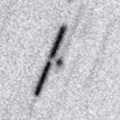
|
It was observed at 18 mag from spring to summer in 2014. In the Northern Hemisphere, it will be observable at 18 mag in good conditionn from winter to spring in 2015 again. It is not observable in the Southern Hemisphere.
Date(TT) R.A. (2000) Decl. Delta r Elong. m1 Best Time(A, h)
Jan. 31 15 39.69 51 49.3 4.094 4.321 96 17.9 5:33 (216, 67)
Feb. 7 15 38.49 54 22.4 4.043 4.324 99 17.9 5:28 (205, 68)
|
|
![]()
 C/2014 R4 ( Gibbs )
C/2014 R4 ( Gibbs ) 116P/Wild 4
116P/Wild 4 40P/Vaisala 1
40P/Vaisala 1 218P/LINEAR
218P/LINEAR 108P/Ciffreo
108P/Ciffreo C/2013 G9 ( Tenagra )
C/2013 G9 ( Tenagra ) C/2014 W2 ( PanSTARRS )
C/2014 W2 ( PanSTARRS ) (347449) 2012 TW236
(347449) 2012 TW236 C/2012 K8 ( Lemmon )
C/2012 K8 ( Lemmon ) C/2014 Q3 ( Borisov )
C/2014 Q3 ( Borisov ) C/2014 W6 ( Catalina )
C/2014 W6 ( Catalina ) C/2013 U2 ( Holvorcem )
C/2013 U2 ( Holvorcem ) 119P/Parker-Hartley
119P/Parker-Hartley P/2014 X1 ( Elenin )
P/2014 X1 ( Elenin ) 65P/Gunn
65P/Gunn 299P/2014 D2 ( Catalina-PanSTARRS )
299P/2014 D2 ( Catalina-PanSTARRS ) C/2013 TW5 ( Spacewatch )
C/2013 TW5 ( Spacewatch ) C/2013 C2 ( Tenagra )
C/2013 C2 ( Tenagra ) C/2014 W9 ( PanSTARRS )
C/2014 W9 ( PanSTARRS ) C/2014 F2 ( Tenagra )
C/2014 F2 ( Tenagra )![]()













































